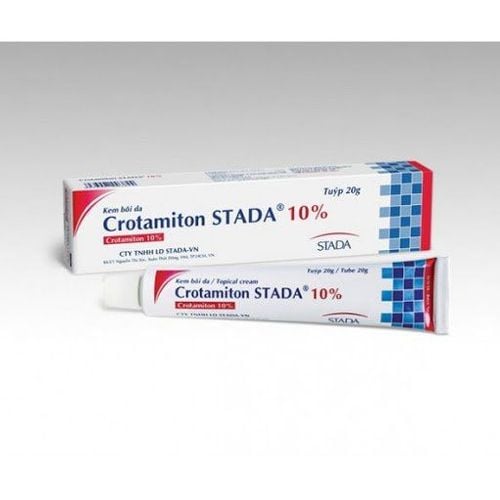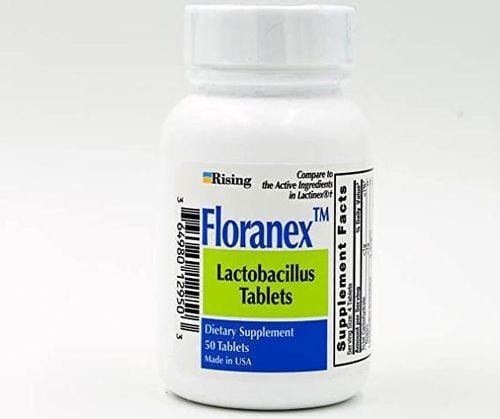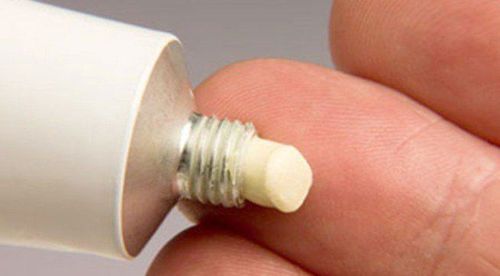This is an automatically translated article.
Orgabact has the main active ingredient is Levofloxacin, a synthetic antibiotic of the Quinolone group. Orgabact is indicated in the treatment of infections such as pneumonia, sinusitis, bronchitis, skin infections and urinary tract infections.
1. Uses of Orgabact
Orgabact is a product of Akums Drugs & Pharmaceuticals Ltd., which is prepared in the form of film-coated tablets. Orgabact contains the main ingredient Levofloxacin 500mg. Levofloxacin is capable of inhibiting topoisomerase II and/or topoisomerase IV, essential enzymes involved in bacterial DNA replication. Levofloxacin is a broad-spectrum antibiotic that is active against many strains of Gram-positive and Gram-negative bacteria. The effect of Levofloxacin on Gram-positive and anaerobic bacteria is better than that of other fluoroquinolone antibiotics. Orgabact is indicated in the treatment of infections caused by susceptible bacteria including:
Acute sinusitis, exacerbation of chronic bronchitis; Nosocomial pneumonia, community-acquired pneumonia; Skin and skin structure infections; Urinary tract infections with or without complications, acute pyelonephritis. Orgabact is contraindicated in the following patients:
There is a history of hypersensitivity to Levofloxacin, excipients in the formulation or other Quinolone antibiotics; Epilepsy patients ; Deficiency of G6PD enzyme; There is a history of tendon disease caused by the use of fluoroquinolone antibiotics; Children under 18 years old.
2. Dosage of Orgabact
Dosage of Orgabact will depend on the severity of the disease and the patient's overall health. Below is the reference dose of Orgabact in some cases:
Acute sinusitis : The recommended dose is 500mg/day x 10-14 days. Exacerbation of chronic bronchitis: Recommended dose of 250 - 500mg/day x 7-10 days. Community-acquired pneumonia: The recommended dose of Orgabct is 500mg, 1-2 times a day x 7-14 days. Urinary tract infections with or without complications, including pyelonephritis: The recommended dose is 250mg/day x 7-10 days. Skin and soft tissue infections: The recommended dose of Orgabact is 500mg, 1-2 times a day x 7-14 days. Patients with renal impairment: Orgabact dose should be adjusted in patients with renal impairment with creatinine clearance ClCr < 50 mL/min.
3. What are the side effects of Orgabact?
Patients using Orgabact may experience undesirable effects including:
Frequency 1 to 10%:
Cardiovascular: Chest pain, edema; Dermatology: Itching, skin rash; Gastrointestinal: Abdominal pain, nausea, vomiting, dyspepsia, constipation, diarrhea; Urinary: Vaginitis, Candida infection; Nervous system: Headache, dizziness; Respiratory: Difficulty breathing. Frequency <1%
Cardiovascular: Palpitations, phlebitis, syncope, ventricular arrhythmias, ventricular tachycardia; Dermatology: Urticaria; Endocrine and metabolic: Hyperglycemia, hyperkalemia, hypoglycemia; Gastrointestinal: Anorexia, Clostridium difficile colitis, gastritis, esophagitis, glossitis, pancreatitis, stomatitis; Genitourinary: Genitourinary candidiasis; Hematology: Anemia, thrombocytopenia, agranulocytosis; Nervous system: Abnormal dreams, agitation, anxiety, confusion, depression, nightmares, paresthesia, somnolence, hallucinations, hypertonia, convulsions; Neuromusculoskeletal: Arthralgia, increased muscle activity, myalgia, bone pain, tremor; Kidney: Acute kidney injury; Respiratory: Nosebleeds.
4. Notes when using Orgabact
Levofloxacin can cause cartilage degeneration in load-bearing joints, so Orgabact should not be used in children under 18 years of age. Orgabct should be used with caution in patients with myasthenia gravis because symptoms may be increased. Quinolone antibiotics have the potential to cause tendonitis, especially the Achilles tendon, and lead to tendon rupture. This side effect usually appears within the first 48 hours after taking the drug and can be bilateral. Complications of tendonitis often occur in high-risk subjects such as the elderly, people who are using corticosteroids. There have been reports of adverse effects such as psychosis, CNS stimulation leading to restlessness, convulsions, headache, tremor, insomnia, confusion, nightmares, depression, intent or commit suicide while using fluoroquinolone antibiotics. Care should be taken when using Orgabact for patients with central nervous system diseases such as epilepsy, cerebral vascular sclerosis, etc. because it may increase the risk of convulsions. Hypersensitivity reactions, even anaphylaxis, have occurred in patients receiving Levofloxacin. Orgabact should be discontinued immediately upon signs of hypersensitivity reactions and appropriate therapeutic measures instituted. Clostridium difficile pseudomembranous colitis has occurred with the use of the antibiotic Levofloxacin, in some cases very serious and even fatal. Sensitization to photos has been reported in patients receiving fluoroquinolone antibiotics, including levofloxacin. Therefore, patients need to avoid direct exposure to direct light during treatment and 48 hours after taking Orgabact. The antibiotic Levofloxacin can cause disturbances in blood sugar, including hyperglycemia or hypoglycemia, especially in patients with diabetes. Therefore, blood glucose should be closely monitored in patients receiving Orgabact. Pregnancy: Levofloxacin can cross the placenta and be detected in amniotic fluid. Orgabact should only be used in pregnant women when the benefits outweigh the risks. Lactation: Levofloxacin may be distributed in breast milk. Because the drug has a risk of causing cartilage damage in young children, Orgabact should not be used in women who are breast-feeding.
5. Drug interactions
Using Orgabact with some drugs can cause interactions, reduce the effectiveness of treatment or increase unwanted effects. The following are some interactions to note when using Orgabact:
Concomitant use of Antacid, metal ions, Sucralfate and Multivitamin can reduce the absorption of Levofloxacin. Therefore, it is necessary to take the above drugs at least 2 hours away from Orgabact. Warfarin: Orgabact can increase the effect of Warfarin, so it is advisable to monitor the coagulation parameters when using 2 drugs on Didanosine: Quinolones can reduce the concentration of Didanosine in the serum and vice versa. Quinolones should be administered at least 2 hours before or 6 hours after Didanosine and closely monitored for the effects of Quinolones. Concomitant use of Levofloxacin with Theophylline may increase the concentration of Theophylline in the blood. Therefore, it is necessary to closely monitor theophylline concentration and adjust the dose if necessary when using these two drugs simultaneously. Domperidone: Concomitant use of drugs with a risk of QT prolongation such as domperidone and levofloxacin may increase the risk of QT prolongation. Alternative options should be considered. In combination, QT interval and ventricular arrhythmias should be monitored. The use of hypoglycemic agents with Levofloxacin may increase the risk of dysglycemia, so the patient's blood glucose should be closely monitored. In short, Orgabact is a prescription antibiotic and must be used as directed by your doctor. Patients should not take the drug, but should consult a doctor or pharmacist before taking it.













